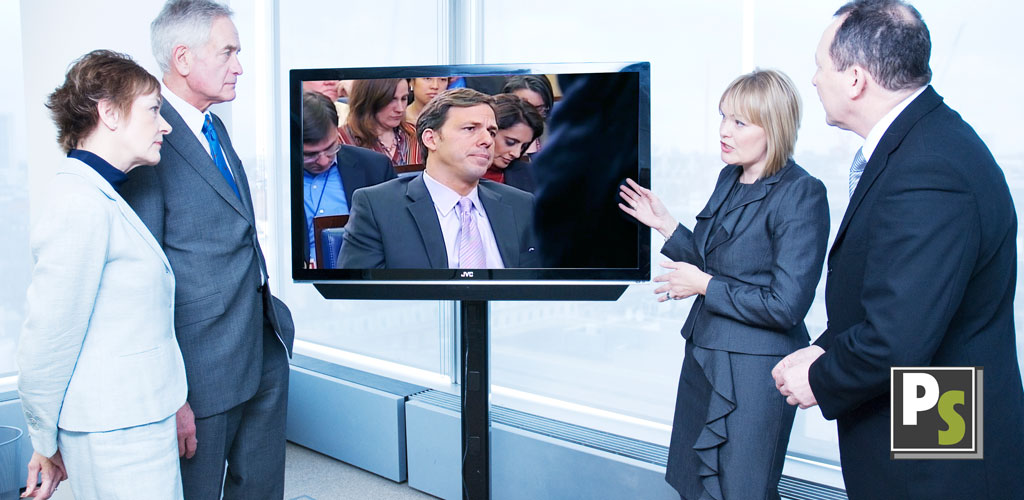‘Always learn from your mistakes,’ my dad would say, before adding: ‘unless they are expensive, in which case learn from someone else’s.’
If you are speaking or presenting, it can be valuable to watch someone else do it. Obviously if they are excellent, you can pick up an idea of ‘best practice’, but even if they are not, you can look on and think ‘Well, I won’t be doing THAT when it’s my turn.’
So here are some things to look out for when you’re in the audience – particularly if you’re the next person due up on stage.
1. How is the stage being used?
I once attended a semi-formal meeting event in which various speakers took to the floor to deliver their presentations. It was a relaxed, fun event, but it wasn’t until the last speaker came on that I realised something was wrong. What did the last speaker do? She took the lectern (which no one had used) and moved it out of the performing area.
There are often things on the stage that speakers (and the audience) accept are there: lecterns, tables, projection screens. If they are not being used, they can hem you in, restrict your space or distract from what you are doing.
Changing the environment – and doing it in an unhurried, matter-of-fact way – sends out a powerful signal: you own the space.
2. What sort of language is being used?
I am particularly sensitive to speakers’ use of sensation: sight, sound, touch, taste and smell. How does the speaker use these (or not)? If you are following someone who always talks in visual metaphors (‘Do you see what I mean?’) you might want to contrast with them by shifting your emphasis onto other senses (‘Do you hear what I’m saying? I feel that…’).
Does the speaker say something that is remarkable and which only they could get away with? For example, we aren’t surprised when Gordon Ramsay turns the air blue, but we’d be a bit taken aback if a newsreader started ‘effing and jeffing’. What can YOU get away with?
Is the speaker formal or informal? Do they call a spade a long handled digging implement or do they cut to the chase? Do they swear? If so, how does the audience react? And how does this all feed in to the tone of the event as a whole? Are they part of the furniture – or an outsider?
3. What ISN’T being said?
Earlier this week, I watched an open mic comedy night – the sort of event where rookie comedians get five minutes to try their hand at stand-up. Being kindly, I laughed dutifully at everyone, but it wasn’t until the last act of the first half that I really felt engaged: what had he done that the others hadn’t?
There was something in his demeanour. I didn’t feel these were just memorised jokes that were being recited. He chatted to us, looked relaxed about being there, and threw out a few direct questions in a friendly, unthreatening way. Afterwards I thought: ‘the others were performing AT us; the last comedian was WITH us.’ It felt like being in a conversation with a witty friend at a party, rather than being on edge about when to laugh politely.
There are so many ways that performers either look the part, or like a fish out of water. There is a difference between being planted powerfully centre stage, and rooted to the spot in fear; gripping the lectern with an evangelist’s zeal, or clinging to it, white-knuckled, for dear life.
4. What is the audience doing?
Lastly, get a feel for the vibe of the room. Are people bored or disengaged? Has it been too long since the last coffee break? Try to get a sense of what has really pushed their buttons, and what has turned them off.
You might find the audience is up for more speaking: fine. You might find that you need to do something to win back their attention: think about using some provocative questions or challenges at the beginning of your speech, a show of hands or some other piece of interaction.
If there is a problem, deal with it. Are there blind spots or places where the sound doesn’t quite reach? ‘Apparently you can hear the kitchens if you’re sat at the back – there are some spare seats down here if you find that distracting.’ Again, by taking control of the situation, you are showing ownership.
Finally, a hard-core bit of speech analysis you might find useful:
http://loymachedo.com/public-speaking/toastmasters-world-champion-of-public-speaking-presiyan-vasilev-changed-by-a-tire-hardcore-detailed-speech-analysis-by-loy-machedo/
Initially, I thought it should be on this blog as a bit of a joke, but there is something about such a detailed analysis that is really interesting and helpful – I was hooked when the author counted the number of gestures made with the left and right hands. For you it may be something else, but look through: there may be something under the microscope that hadn’t occurred to you, and if (as the author claims) this really did take nine days to write, I think my dad would strongly approve of letting someone else do the work this time round.
PS Programmes deliver presentation skills, TV and radio media training and crisis media management, tailored to the needs of our clients. This article also appears on http://www.presentationskillsprogrammes.co.uk






